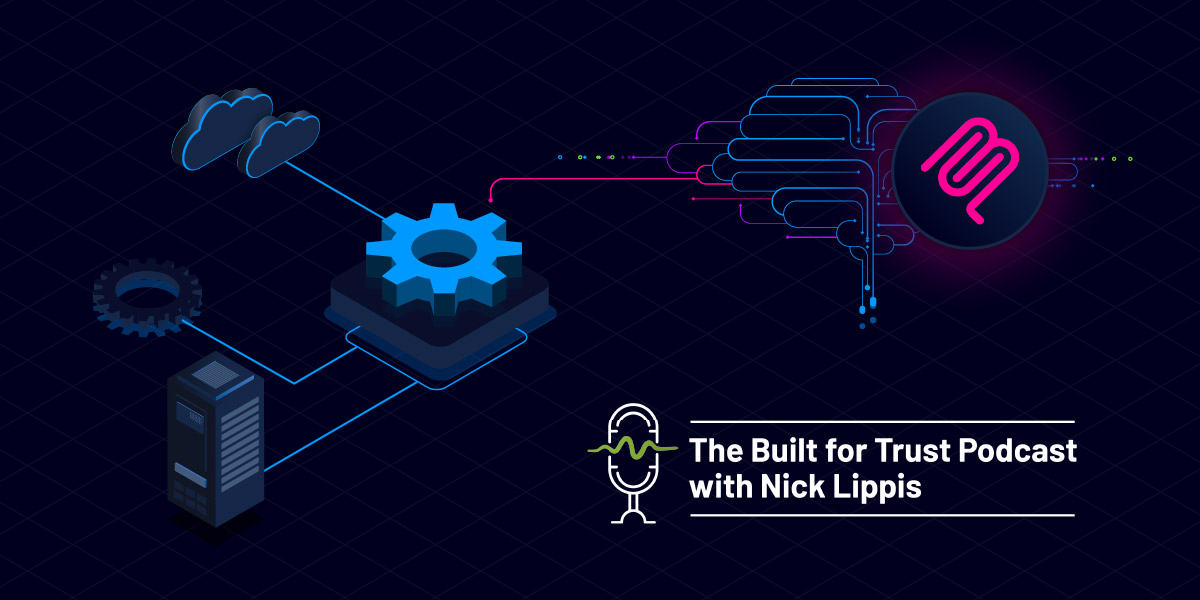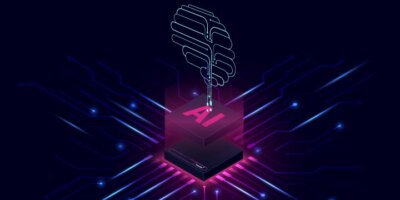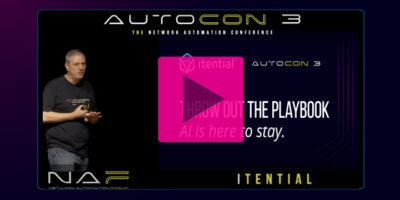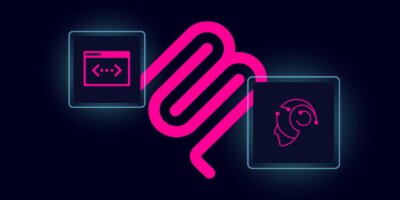Share this

Table of Contents
I recently joined the Built for Trust podcast with Nick Lippis to unpack a fundamental shift underway in how enterprises manage network infrastructure – moving beyond static scripts to AI-driven, reasoned orchestration.
It’s clear to me: we’re at an inflection point where infrastructure must evolve to meet the demands of agility, scale, and trust.
Why Do We Need to Rethink Automation Now?
For decades, networks were defined by the CLI. Engineers lived in terminals, typing commands by hand, basic Perl and Tcl scripts, troubleshooting in real time, and fighting fires with each outage. It was deeply human-centric, and it worked – but it was also fragile, slow, and prone to error.
Then came programmability: APIs, controllers, and frameworks like Ansible and Terraform. These tools allowed us to encode tasks into repeatable scripts, to bring order and predictability into operations. They were breakthroughs, no doubt, but still rigid. Pipelines are brittle, they only do exactly what we tell them to do, in the order we prescribe.
Meanwhile, the demands on infrastructure exploded. Hybrid cloud, SaaS, edge computing, security compliance – enterprises need agility, resilience, and trust at a scale that fixed workflows can’t deliver. That’s why we need to rethink automation now. The systems that got us here won’t get us where we need to go next.
What Makes Agentic AI Different?
Automation executes, agentic AI reasons. That’s the critical distinction.
Traditional scripts and workflows are rule-bound. If X happens, do Y. But infrastructure doesn’t always fit into neat conditions. Outages don’t follow a playbook. Configuration drift doesn’t resolve in a linear way.
Agentic AI introduces something new: the ability to interpret context, evaluate risk, and decide on the best course of action within guardrails. Instead of brittle “if/then” scripts, you get reasoned orchestration.
The enabler is the Model Context Protocol (MCP). MCP gives AI agents the contextual bridge to interface with infrastructure. This enables more than traditional automation that replaces keystrokes; it allows the replacement of business logic with reasoning.
How Do We Build Trust in AI-Driven Infrastructure?
Trust doesn’t come from promises; it comes from proof.
That’s why the first step in agentic AI adoption isn’t to hand over the keys, it’s to start read-only. Agents answer questions like “What’s happening?” before we ever let them take action. They collect data, analyze patterns, and provide visibility. Only after governance, compliance checks, and human-in-the-loop validation are in place do we allow them to move from observation into execution.
This mirrors every prior wave of automation. We didn’t jump straight into self-healing systems; we started small, built trust, and layered capabilities over time. Agentic AI should be no different. The organizations that succeed will be the ones that pace their adoption, focusing on safe wins that prove value while laying the foundation for deeper autonomy.
What Role Will Domain-Specific Agents Play?
Not all agents are created equal. While general-purpose LLMs are powerful, they’re not enough to run infrastructure. What’s needed are domain-specific agents – AI systems trained with deep expertise in networking and validated best practices.
Imagine an EVPN design expert in a box. Or a compliance checker that knows exactly which configurations align with regulatory frameworks. Or a troubleshooting agent that can reason through error logs and topology maps to pinpoint root causes.
These aren’t science fiction. They’re the logical extension of what enterprises have always demanded from vendors: validated designs, configuration guides, best practices. Now, that intelligence can be embedded in agents that act on your behalf, with your context, within your policies. That’s where agentic AI becomes not just powerful, but trustworthy.
How Do We Orchestrate AI Safely at Scale?
This is where orchestration platforms matter. Insights without execution are just observations. The true value comes when AI insights flow into governed, orchestrated action. We need a platform behind MCP that will align policy, security, and scale.
That’s why we built the Itential MCP Server, the control layer that ensures every AI-driven intent passes through policy-enforced workflows, validations, and approvals. Whether it’s compliance remediation, AI-augmented troubleshooting, CI/CD automation, or ticket triage, the MCP Server puts orchestration at the center of AI-driven change.
The result is closed-loop automation. AI surfaces insights, the orchestration layer validates and executes within policy, and the system learns from the outcome. This is how enterprises will safely scale agentic AI adoption without losing visibility, governance, or control.
What’s the North Star for Infrastructure Leaders?
Looking ahead, it’s clear the enterprise AI footprint will grow dramatically. Most IT spend will be viewed through the lens of advancing your Enterprise AI strategy. That means networks won’t just connect workloads; they’ll need to support hybrid AI models across private and public environments, all under consistent policy.
But with great power comes new risk. Agentic systems bring identity, permission, and resilience challenges we’ve never had to manage at this scale. Guardrails, authentication, rate limiting, auditing, attack mitigation – are no longer optional. They’re the price of admission.
The North Star is an infrastructure that’s programmable, governed, and consumable, not just by developers and businesses, but by intelligent agents themselves. Imagine infrastructure as reliable and transparent as compute or storage, delivered like a service, componentized, and productized. That’s where we’re headed.
And for leaders still clinging to static workflows and brittle scripts, this is your wake-up call. The future is agentic, and the pace of adoption will only accelerate.
Looking Ahead
We’ve been through inflection points before – from CLI to APIs, from manual change windows to pipelines. Each time, the winners were those who embraced change early, built trust step by step, and reimagined what was possible.
Agentic AI is the next frontier. Anchored by trust, guided by policy, and powered by reasoning, it’s not just about automating what we do today. It’s about redesigning how we operate tomorrow.
The future is agentic. The only question is how quickly we choose to embrace it.
Check out my full conversation with Nick Lippis on the Built for Trust podcast, where we unpack this shift in even more detail. And if you’d like to continue the discussion, I’d love to connect. Join me on LinkedIn to share your perspective on where agentic AI is taking infrastructure.



